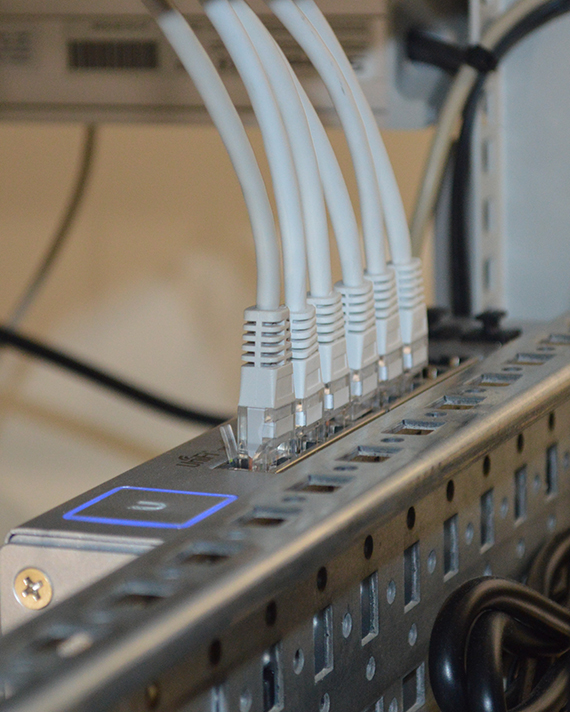Data voice networks
More productive, safer and more agile business
The right network to support them
Technology is constantly evolving and changing, sometimes faster than you could ever guess. These new tools can make business more productive, safer and more agile. However, these tools need the right network to support them.
Structured cabling is an infrastructure made up of smaller, standardized elements. You can install structured cabling systems in a building, for example. This type of network cabling can support all the technology that is advancing rapidly in the workplace.
In the past, it was used point-to-point cabling, which meant that each piece of hardware was using its own cable. The wiring literally worked from one point to another. This would lead to a confusing mess of cables and wires that could be accidentally disconnected or could present a safety hazard for tripping. To meet the growing need for speed and more bandwidth, structured cabling systems have come into use and are now the best solution for a company’s network.
Structured cabling systems are a kind of network cabling solution that organizes your infrastructure. The beauty of structured cabling is that it helps secure your business, ensuring any new hardware you add, while supporting the growing amount of data that businesses use every day. It makes things much easier to manage as your business grows!

Maximum operating time
The operating time is maximum because adding new hardware takes much less time. Because the cables are neat and neatly installed, there is less confusion. A wrong cable is less likely to be disconnected during moves, additions, and changes.
The footprint is reduced because a structured cabling system allows technicians to use trunk cabling with a smaller diameter, reducing the total volume of cables and reducing the chances of blocked airflow and broken cables. By nature, a structured cabling system is organized and planned.
The scalability is increased because today’s data centers are complex and diverse environments. A structured cabling system is needed to manage and support hardware connections and to allow network growth. A structured system allows scalability due to its modular design. Because the footprint is already in place, it’s easy to add additional patch panels to create new connections.

